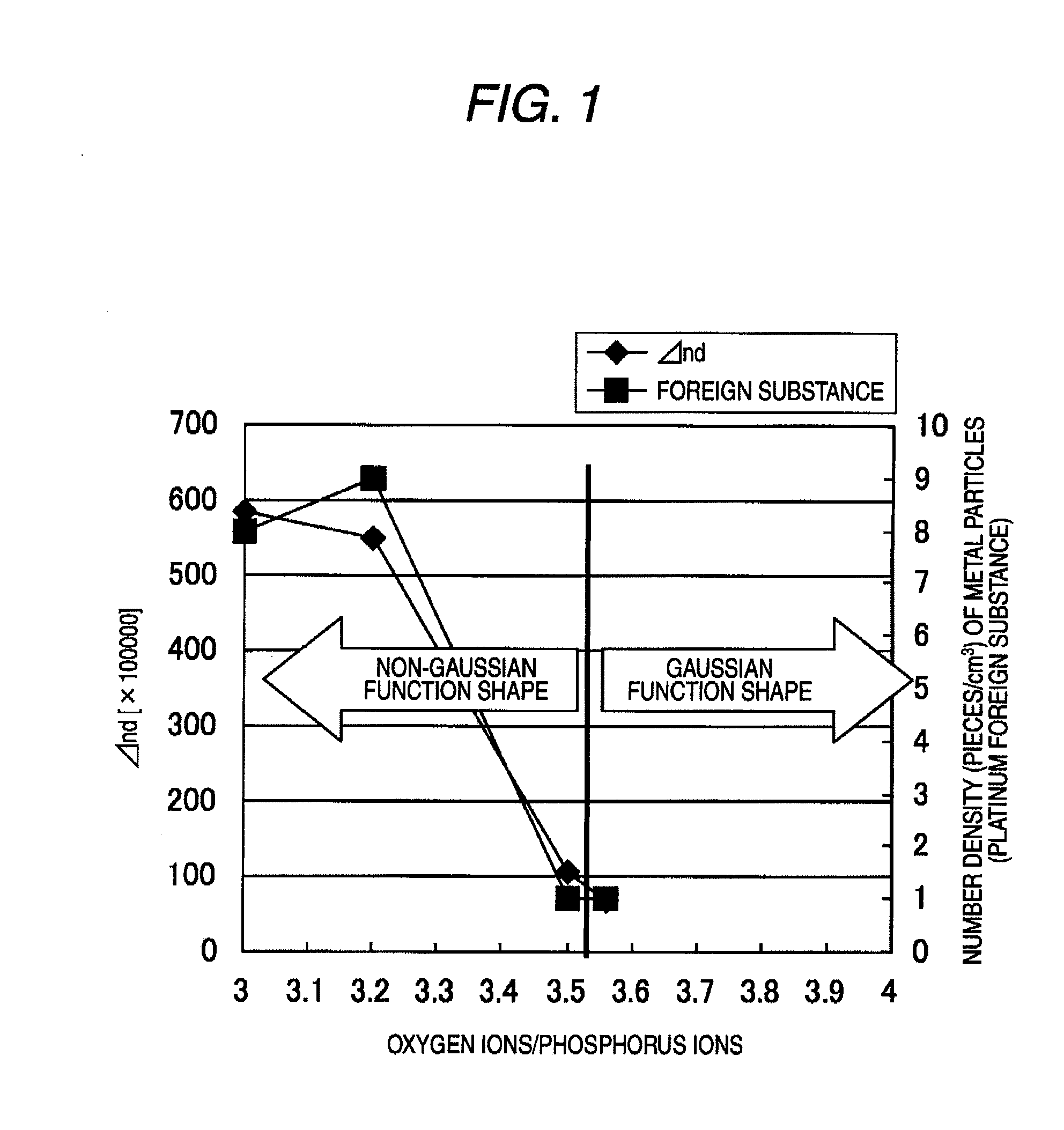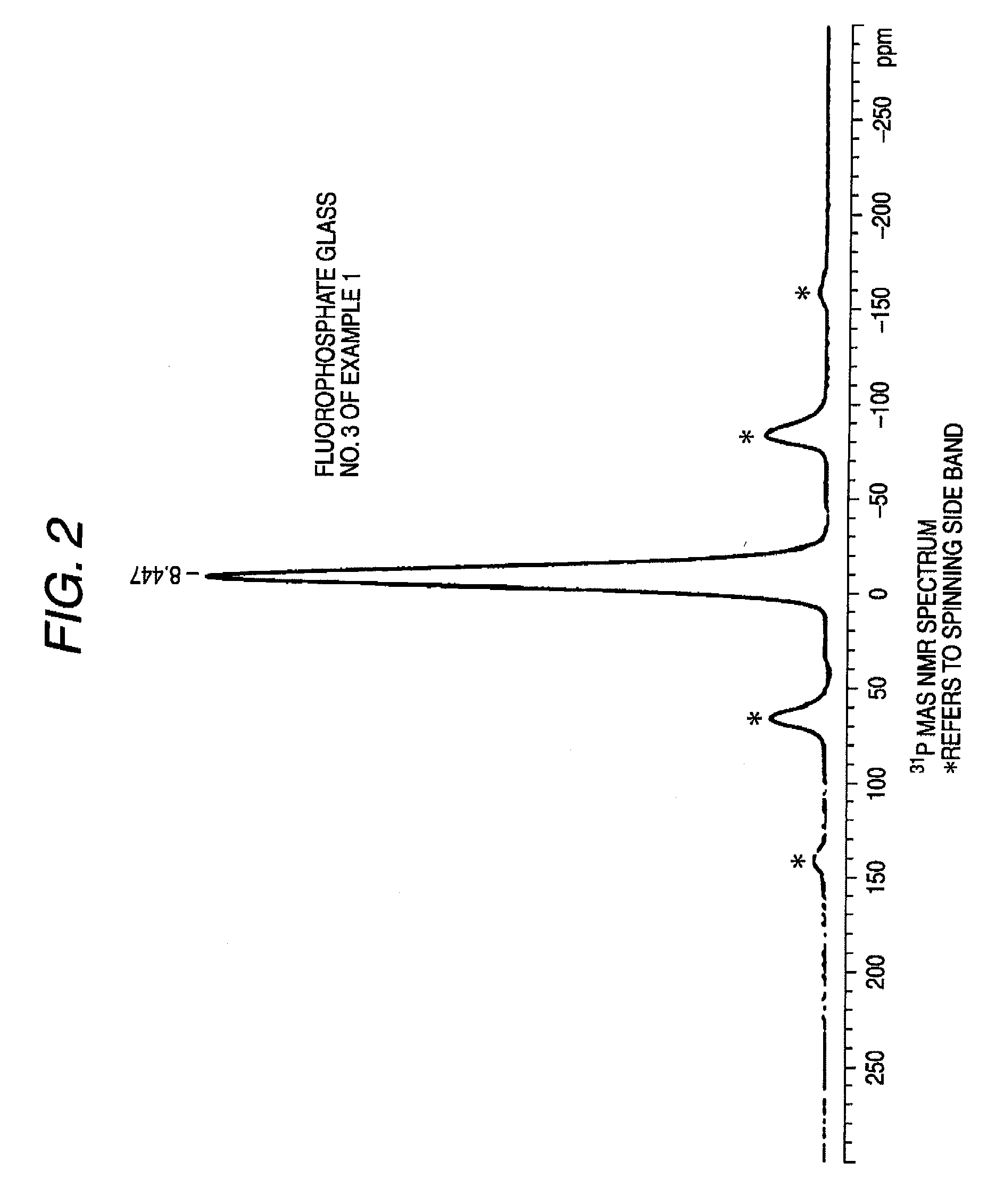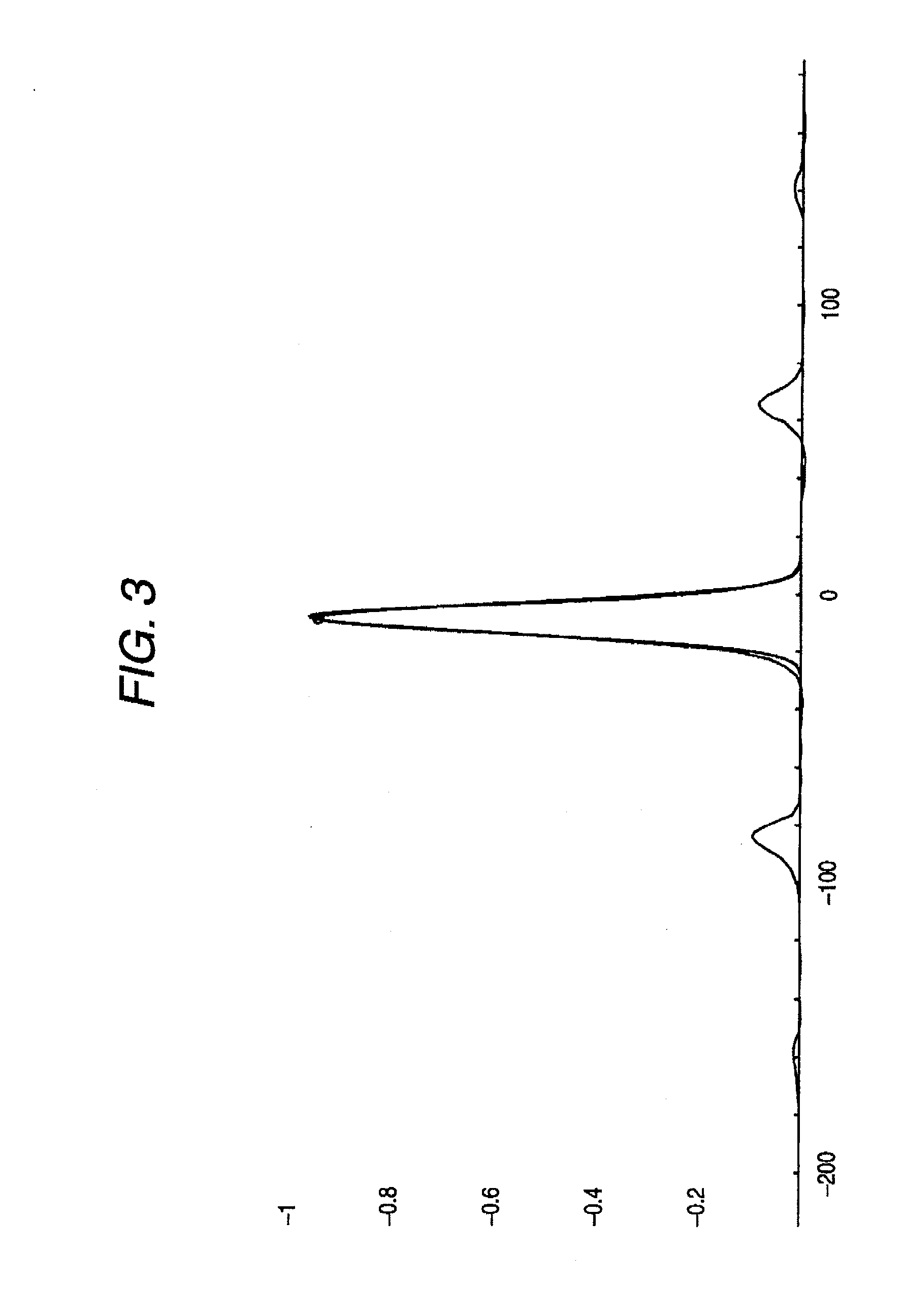Fluorophosphate glass, precision press molding preform, optical element blank, optical element and methods of manufacturing the same
a technology of fluorophosphate glass and press molding preforms, which is applied in the field of fluorophosphate glass, precision press molding preforms, optical element blanks, optical element and methods of manufacturing the same, can solve the problems of easy change of optical characteristics such as refractive index, hard to stably produce high-quality glass, and eroded slightly by molten glass of platinum crucible, etc., to achieve good optical homogeneity
- Summary
- Abstract
- Description
- Claims
- Application Information
AI Technical Summary
Benefits of technology
Problems solved by technology
Method used
Image
Examples
example 2
Example of Manufacture of Precision Press Molding Preform
[0204]A lump of molten glass was separated using a method of flowing molten glass composed of each of the fluorophosphate glasses No. 1 to No, 4 shown in Table 1 out of a pipe made of platinum alloy and adjusted to a temperature range to allow stable flowing without glass being devitrified, at a constant flow rate and dropping a lump of glass, or a method of supporting a leading end of stream of the molten glass using a support and suddenly descending the support to separate a lump of glass. The obtained lump of molten glass had a weight which is an addition of a weight of a removed portion, which will be described later, to a weight of one objective preform.
[0205]Next, the obtained lump of molten glass was received in a receiving mold having a glass exhaust nozzle formed in its bottom portion, the lump of glass was molded while rising the lump of glass by a gas exhausted from the gas exhaust nozzle, and press molding preforms...
example 3
Example of Manufacture of Optical Element
[0210]An aspherical lens was obtained by precision press-molding each preform, which was obtained as the above, using a press apparatus shown in FIG. 6.
[0211]Specifically, after placing a preform 4 between a lower mold 2 and an upper mold 1 of a press mold including the upper mold 1, the lower mold 2 and a trunk mold 3, a quartz tube 11 was electrically conducted to a heater 12 in a nitrogen atmosphere to heat the quartz tube 11. The internal temperature of the press mold was set to a temperature at which glass to be molded shows viscosity of 108 to 1010 dPa·s, and while maintaining the same temperature, a pressing rod 13 descended to push down the upper mold 1 to press the preform set in the press mold. Press pressure was set to 8 MPa and press time was set to 30 seconds. After pressing, the press pressure was released, a press-molded glass molded article was slowly cooled to a temperature at which the glass reaches viscosity equal to or mor...
example 4
Example of Manufacture of Optical Element Blank
[0217]The molten glass composed of each of the fluorophosphate glasses No. 1 to No. 4 shown in Table 1 was flown out of a pipe made of platinum alloy and adjusted to a temperature range to allow stable flowing without glass being devitrified, at a constant flow rate, and the molten glass was supplied on the molding surface of the lower mold constituting the press mold. In addition, before supplying the molten glass, a powder release agent such as boron nitride powder was uniformly applied on the lower mold molding surface.
[0218]Next, the flown molten glass was cut using a cutting knife which is called shear to thereby obtain a desired amount of lumps of molten glass on the lower mold molding surface.
[0219]Next, the lower mold on which the lump of molten glass was placed was moved to a position at which the upper mold constituting the press mold stands upward, and the lump of molten glass was press-molded using the upper and lower molds ...
PUM
| Property | Measurement | Unit |
|---|---|---|
| molar ratio | aaaaa | aaaaa |
| Abbe number νd | aaaaa | aaaaa |
| refractive index nd | aaaaa | aaaaa |
Abstract
Description
Claims
Application Information
 Login to View More
Login to View More - R&D
- Intellectual Property
- Life Sciences
- Materials
- Tech Scout
- Unparalleled Data Quality
- Higher Quality Content
- 60% Fewer Hallucinations
Browse by: Latest US Patents, China's latest patents, Technical Efficacy Thesaurus, Application Domain, Technology Topic, Popular Technical Reports.
© 2025 PatSnap. All rights reserved.Legal|Privacy policy|Modern Slavery Act Transparency Statement|Sitemap|About US| Contact US: help@patsnap.com



